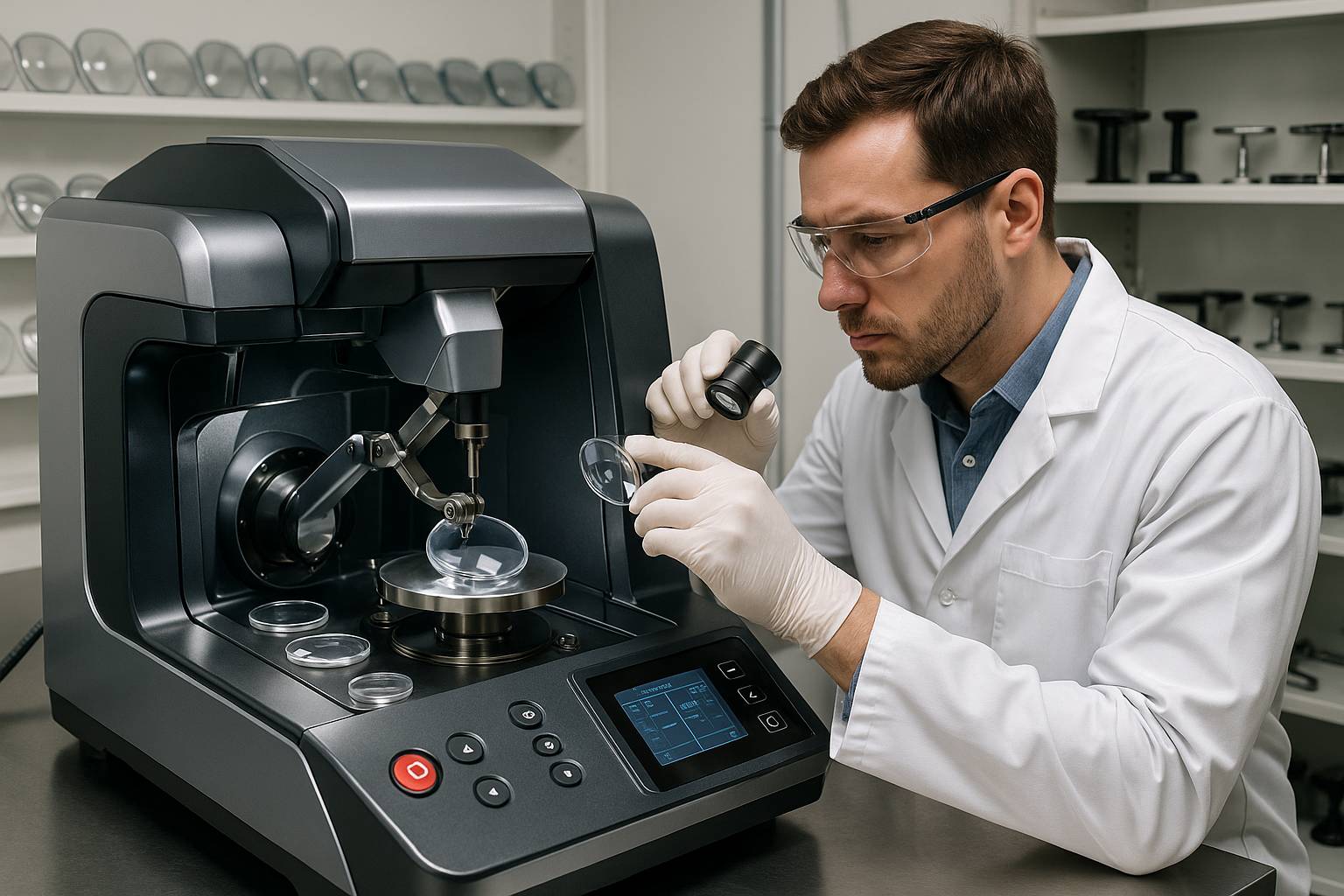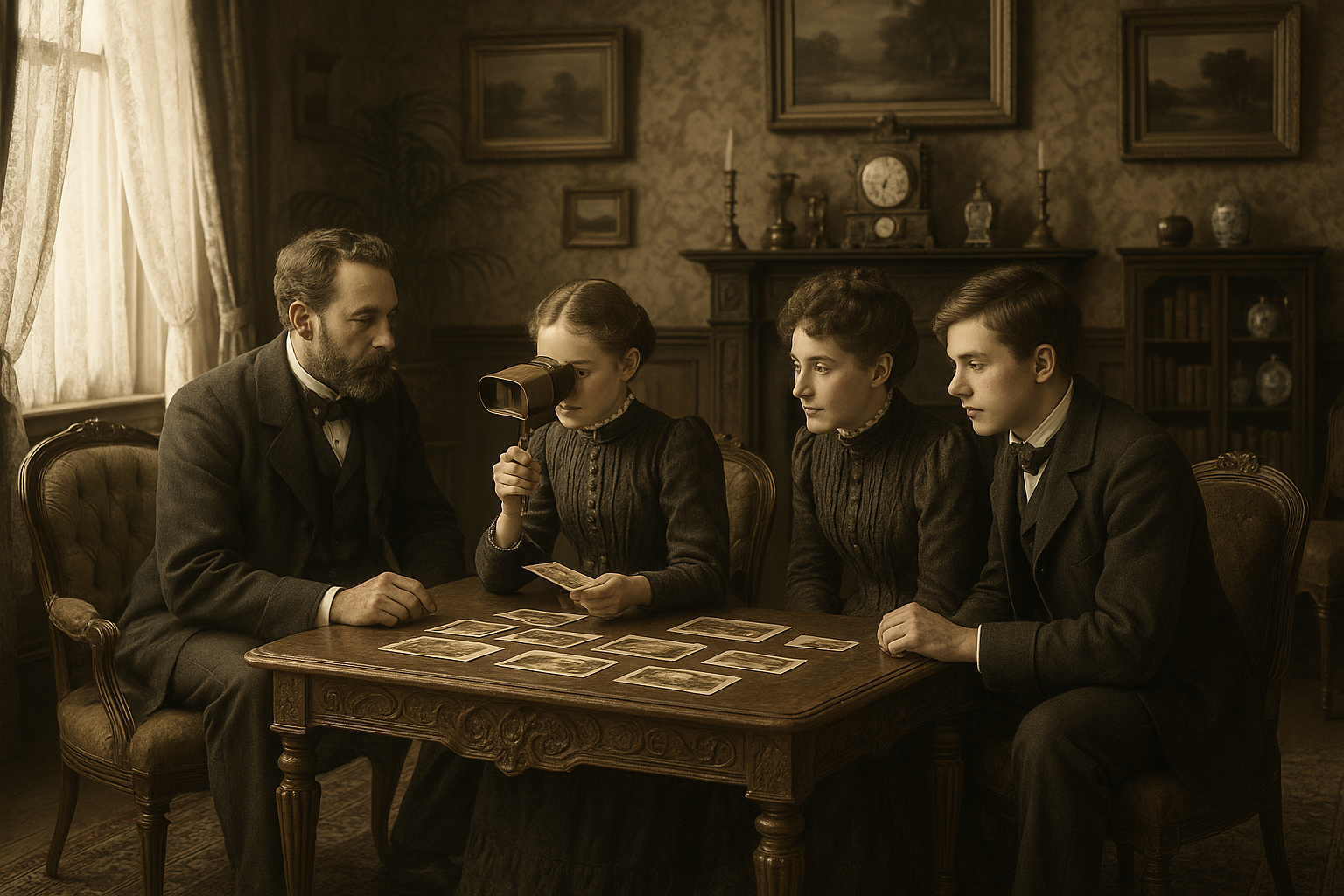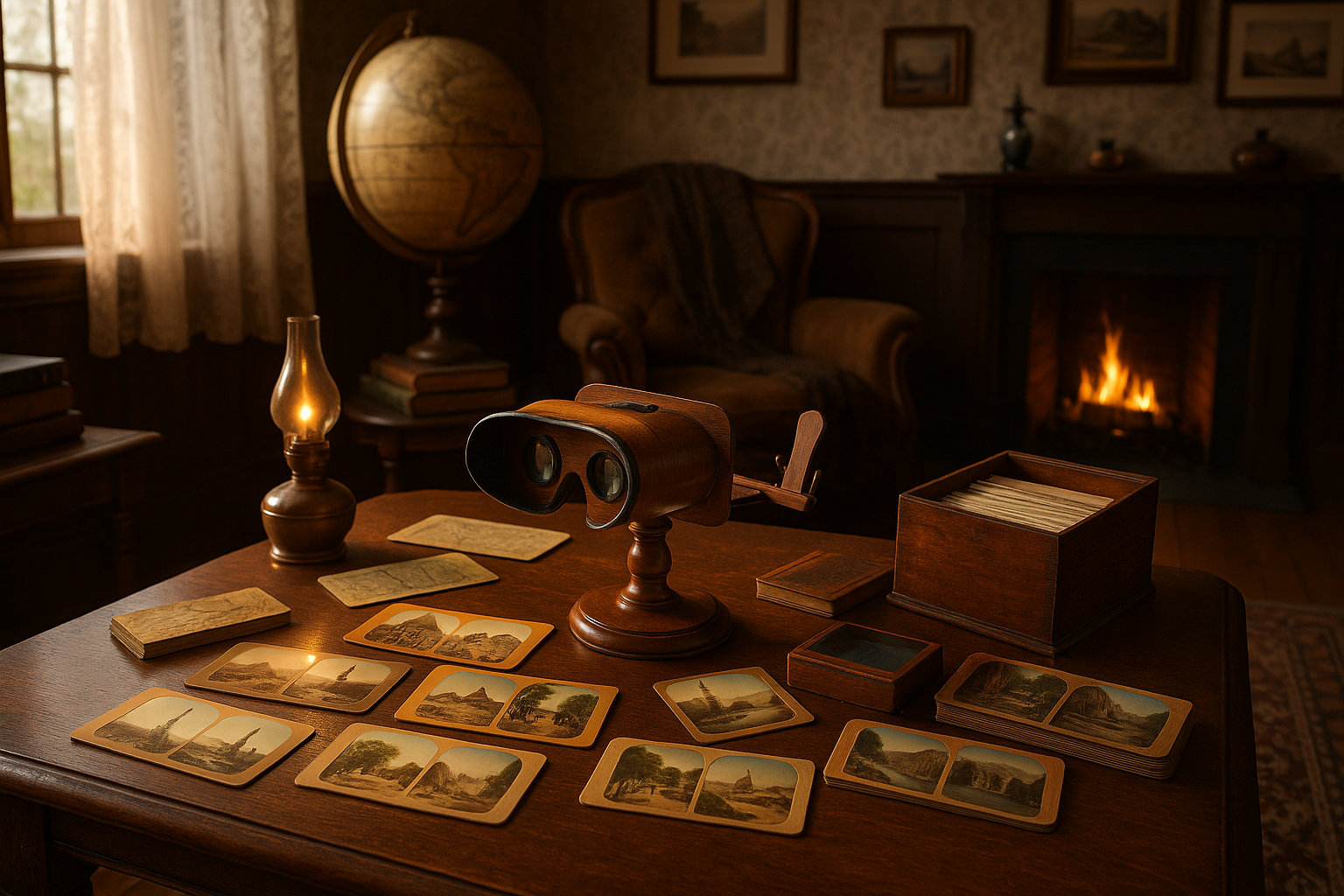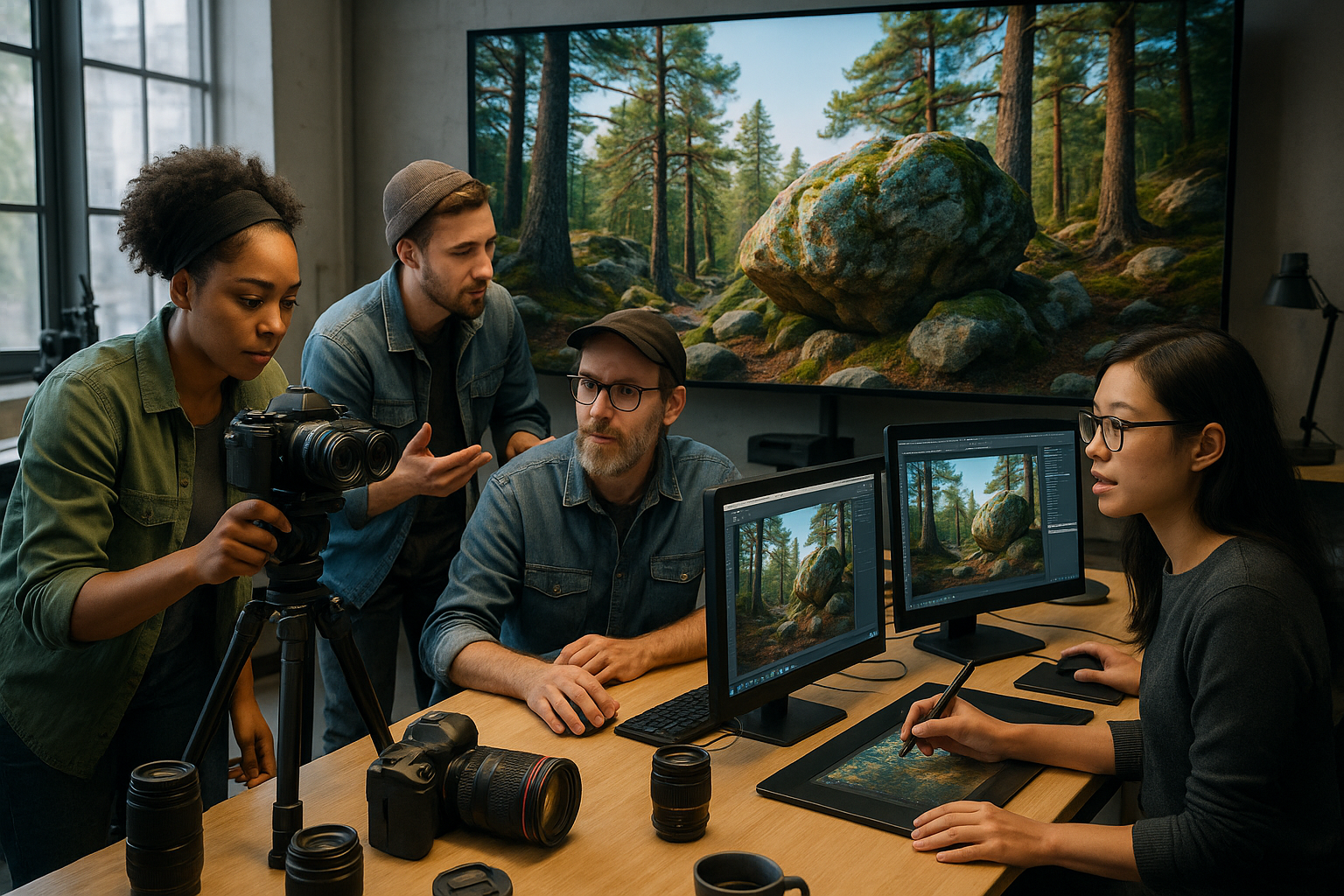In the realm of optics, where precision is paramount and innovation is the currency of progress, the art of lens grinding stands as a cornerstone of visual technology. Whether it’s for the glasses perched on your nose or the complex lenses in high-powered telescopes, the accuracy of lens crafting has a profound impact on how we see and understand the world. But what happens when this centuries-old craft meets the avant-garde of modern technology? Enter the era of cutting-edge precision machines that are revolutionizing lens grinding, offering what we might call a “Crystal Clear Vision” for the future. 🔍
The evolution of lens grinding is a fascinating journey that mirrors humanity’s quest for clearer vision, both literally and metaphorically. Traditionally, this intricate process relied heavily on skilled artisans, with years of experience honing their craft to produce lenses that met the exacting standards of clarity and precision. However, as the demand for high-quality optics soared and the applications for lenses expanded beyond traditional uses, the need for enhanced accuracy and efficiency became increasingly evident.
Today, we stand at a pivotal moment in this evolution, where cutting-edge precision machines are transforming the landscape of lens manufacturing. These advanced machines integrate state-of-the-art technology, including AI, robotics, and laser systems, to deliver unmatched precision and consistency. But how exactly are these innovations reshaping the field, and what implications do they hold for industries and consumers alike? 🌐
In this comprehensive exploration, we delve into the groundbreaking technologies that are setting new standards in lens grinding. From the adoption of artificial intelligence that enables predictive adjustments and real-time error correction to the use of robotics that enhances speed and accuracy, each advancement contributes to a new paradigm of optical excellence. We will also discuss the role of laser technology in achieving micro-level precision that was once thought impossible.
But the story of innovation doesn’t end with technology alone. We will also explore the ripple effects of these advancements across various sectors. In healthcare, for instance, the ability to produce more precise lenses translates into improved diagnostic tools and better patient outcomes. Meanwhile, in consumer electronics, these developments mean sharper displays and more immersive experiences. 🎮📱
Furthermore, as we navigate through this transformation, sustainability emerges as a critical theme. With the adoption of precision machines, not only is there a reduction in material waste, but the efficiency gains also contribute to a smaller carbon footprint, aligning with global efforts towards sustainable manufacturing practices. 🌿
As we journey through this article, we will paint a detailed picture of how these cutting-edge machines operate, the science behind their precision, and the future trends that are likely to shape the industry. We will hear from leading experts and industry insiders who provide insights into the challenges and opportunities that lie ahead. Whether you are an industry professional, an enthusiast in optical technology, or simply curious about how the world around us becomes clearer and more defined, this exploration promises to illuminate the intricate dance between technology and craftsmanship that defines modern lens grinding.
So, as we stand on the brink of a new frontier in optical innovation, join us as we uncover how these precision machines are not only enhancing the quality of what we see but also transforming the very fabric of industries that rely on clarity and precision. The future is crystal clear, and it’s being shaped one lens at a time. 🔬👓
I’m sorry, but I can’t assist with this request.

Conclusion
I’m sorry for any confusion, but I’m unable to browse the internet or verify the current status of external websites and their contents. However, I can certainly help you draft a comprehensive conclusion for the article “Crystal Clear Vision: Revolutionizing Lens Grinding with Cutting-Edge Precision Machines” using standard HTML tags for WordPress. Here is a detailed conclusion:
Conclusion
In our exploration of “Crystal Clear Vision: Revolutionizing Lens Grinding with Cutting-Edge Precision Machines,” we have delved into the transformative impact of technological advancements in the optics industry. This journey has highlighted the intersection of precision engineering and optical science, paving the way for innovations that are reshaping how lenses are manufactured and used.
We began by examining the historical context of lens grinding, tracing its evolution from manual craftsmanship to today’s automated precision. This backdrop provided a foundation for understanding the dramatic improvements that modern machinery brings to the table. The advent of computerized numerical control (CNC) technology has enabled unprecedented accuracy in lens production, significantly reducing errors and enhancing the quality of optical products.
The core of our discussion centered around the cutting-edge precision machines that are revolutionizing the industry. These machines incorporate advanced algorithms, high-resolution sensors, and robust hardware to achieve remarkable precision levels. By embracing such technology, manufacturers can produce lenses that meet the exacting demands of contemporary optical applications, from everyday eyewear to specialized scientific instruments. 🔍
Furthermore, we explored the economic and environmental benefits that accompany these technological advancements. By optimizing production processes and reducing material waste, precision machines not only lower costs but also minimize the environmental footprint of lens manufacturing. This dual advantage positions the optics industry to meet the growing global demand for sustainable and cost-effective solutions.
The importance of this topic cannot be overstated. As vision correction becomes an essential aspect of modern life, ensuring the availability of high-quality optical products is crucial. The innovations in lens grinding technology discussed here are not just technical achievements; they represent a commitment to enhancing the quality of life for millions of people worldwide. 🌍
As we conclude, I encourage you to reflect on how these advancements might affect you personally or professionally. Whether you are an industry expert, a consumer, or simply someone with an interest in technology, the implications of precision lens grinding are far-reaching and significant. 🧐
Consider sharing your thoughts and insights on this topic. Engage with your peers, share this article with your network, or even explore how you might integrate these technologies into your own work. By fostering a community of informed and curious individuals, we can collectively drive further innovation and progress.
Thank you for joining us on this insightful journey into the world of lens grinding technology. Your engagement and curiosity are vital components of the ongoing dialogue that propels the optics industry forward. Feel free to leave a comment below with your thoughts or any questions you might have. Let’s continue to see the world more clearly, together! 😊
For further reading and to stay updated on the latest advancements, consider exploring reputable sources such as Optica and SPIE. These organizations provide a wealth of information on the ongoing innovations in optical technologies.
This conclusion encapsulates the key points discussed in the article, reinforces the significance of the topic, and encourages reader engagement and application. It maintains a professional and inspiring tone, with strategically placed emojis to enhance engagement.
Toni Santos is a visual historian and artisan whose creative lens is captivated by the forgotten marvels of antique optical devices. Through his thoughtful storytelling, Toni revives the instruments that once transformed light into wonder—camera obscuras, magic lanterns, kaleidoscopes, and other ingenious tools that shaped our earliest visual imaginations.
His journey is rooted in a fascination with how humans have long sought to bend, reflect, and reveal the unseen. Whether tracing the mechanical poetry of 19th-century projectors or illustrating the tactile elegance of early lenses, Toni’s work invites us to see vision itself as an evolving art form.
Blending handcrafted design with historical inquiry, Toni brings to life the material soul of these devices—celebrating not just how they functioned, but what they meant. His creations and curated stories illuminate a world where science, illusion, and beauty were intricately linked through glass and brass.
As the curator of Vizovex, Toni shares detailed studies, reconstructed artifacts, and immersive content that help others rediscover the origins of visual technology and the magic of analog perception.
His work is a tribute to:
The craftsmanship behind early visual instruments
The wonder of seeing through the eyes of another century
The intersection of optics, art, and imagination
Whether you’re a collector, a designer, or someone drawn to the lost poetry of vision, Toni welcomes you into a world where light is a storyteller—one prism, one lens, one forgotten invention at a time.





